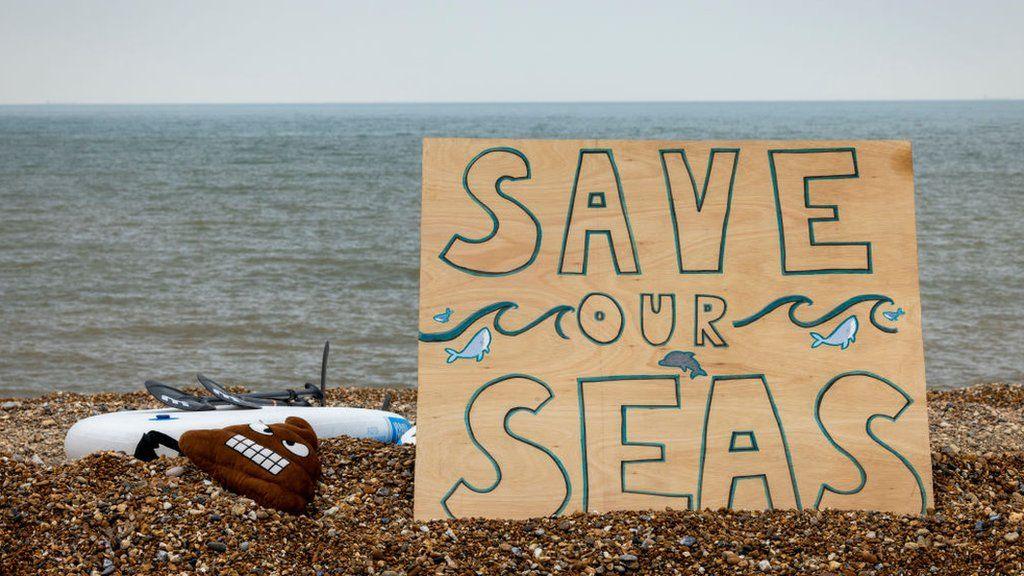Data released by the Environment Agency reveals that water companies discharged raw sewage into England’s seas and rivers for a record 3.61 million hours in 2024.
While regulations permit limited sewage discharge during periods of heavy rainfall, environmental groups are voicing concerns that the current levels pose a significant threat to wildlife and a health hazard for swimmers.
The duration of sewage spills by water companies in England’s waterways saw a slight increase in 2024, reaching 3.614 million hours, up from 3.606 million hours in 2023. However, the Environment Agency noted a decrease in the total number of spills, indicating that the average duration of each spill was longer in 2024.
Water UK, the industry body representing water and sewerage companies, has previously described sewage spills as “unacceptable.” The organization maintains that it has a plan, involving substantial infrastructure upgrades, “to end water sewage flowing into all waterways.”
In July, Environment Agency data also showed that pollution incidents caused by water companies, stemming from sewage spills and other contaminants, reached record levels.
Among these, 75 were classified as serious incidents, posing a threat to both aquatic and human health, with Thames Water responsible for 33 of them.
Data on sewage spills for the devolved nations is released separately. Northern Ireland does not currently monitor real-time spills, and while Scotland has increased monitoring efforts, data is only collected from 27% of spill sites.
In Wales, spill durations decreased by 11% in 2024, but pollution incidents reached a ten-year high.
The majority of the UK utilizes a combined sewerage system, where rainwater and wastewater (from toilets, bathrooms, and kitchens) are transported in the same pipes.
Wastewater is typically directed to sewage treatment plants.
However, capacity can be exceeded during periods of heavy rainfall, particularly if dry ground is unable to quickly absorb large volumes of water.
This can lead to the inundation of sewage works and potential flooding of homes, roads, and public spaces.
Consequently, the system is designed to overflow occasionally, discharging excess wastewater into the sea and rivers from combined sewer overflows (CSOs).
According to Ofwat, the industry regulator, some water companies have been “routinely releasing sewage” outside of heavy rainfall periods, violating their permits—a practice known as dry spilling. The regulator attributes this to companies’ failure to effectively manage their wastewater treatment plants, resulting in untreated sewage overflowing into rivers and lakes.
Last year, the BBC reported on 6,000 potential dry spills by England’s water companies in 2022.
Even during rainfall, water company permits mandate the treatment of a minimum amount of sewage before release.
Aging infrastructure has been identified by the industry, government, and campaigners as a primary factor contributing to sewage spills.
At the end of last year, Ofwat approved a plan for water companies in England and Wales to invest a total of £104 billion over the next five years for infrastructure upgrades and to secure water supplies, with £20 billion specifically allocated to addressing sewage spills.
Water UK characterized this investment as the “most ambitious modernization of sewers since the Victorian era.”
However, environmental campaigners have criticized the fact that customers’ bills are rising significantly to help finance these changes, while water companies continue to distribute dividends to shareholders.
Since Labour took office in the Summer of 2024, a number of new policies have been announced:
In May 2024, a team of leading UK engineers and scientists warned of the increasing public health risks posed by human feces in the country’s rivers, advocating for more frequent testing.
The presence of feces can expose individuals to bacteria such as salmonella and E. coli, which cause diarrhea and vomiting, or viruses like hepatitis A, which can lead to liver infection.
Every week between May and September, the Environment Agency monitors water quality at bathing sites across England, issuing daily pollution risk forecasts in certain areas. The agency is also proposing to extend the bathing season to allow for year-round testing.
You can search its website by location. Similar websites provide information on beaches and bathing water quality in Scotland, Wales, and Northern Ireland.
At the end of last year, Water UK, the industry body, launched the National Storm Overflow Hub, offering near real-time data on discharges from overflow points across England. However, this platform does not provide information on the volume of sewage discharged or the presence of organisms carrying fecal-oral diseases in the water.
Routine monitoring of sewage spills has only been in place for a few years, making it challenging to accurately assess changes over time.
However, overall water quality has been monitored for decades, accounting for various pollution sources, including agriculture.
In May 2023, the Environment Agency reported that 16% of assessed surface waters in England achieved “good” ecological status, including:
Water quality is generally higher in other parts of the UK.
In Scotland, approximately two-thirds of surface waters are classified as having “good” ecological status.
In Wales, the figure is 40%, and in Northern Ireland, 31%.
The Environment Agency says the pass no longer meets standards for monitoring or water management.
Last year had the highest number of pollution events by water companies ever recorded.
Natural Resources Wales data shows Welsh Water was responsible for 132 sewage spills in 2024.
The firm saw four serious incidents in 2024 and the highest number of incidents per 10,000km of sewer.
Pett will have a new Environment Agency flood warning system to cover the Marsham Sewer.

